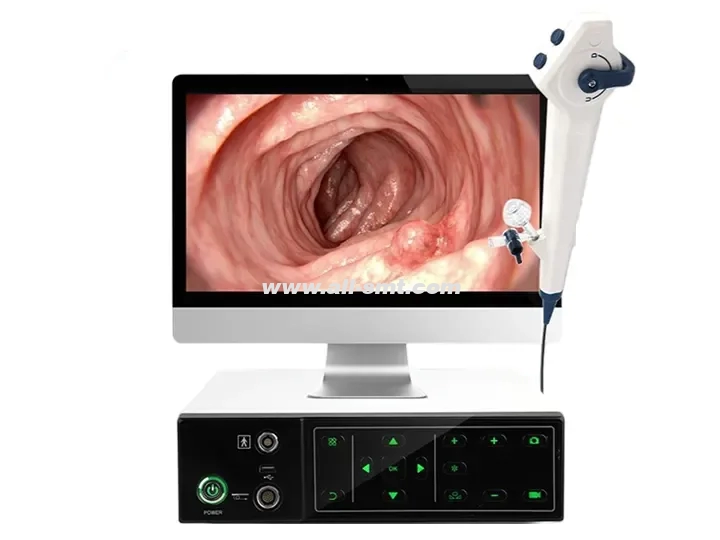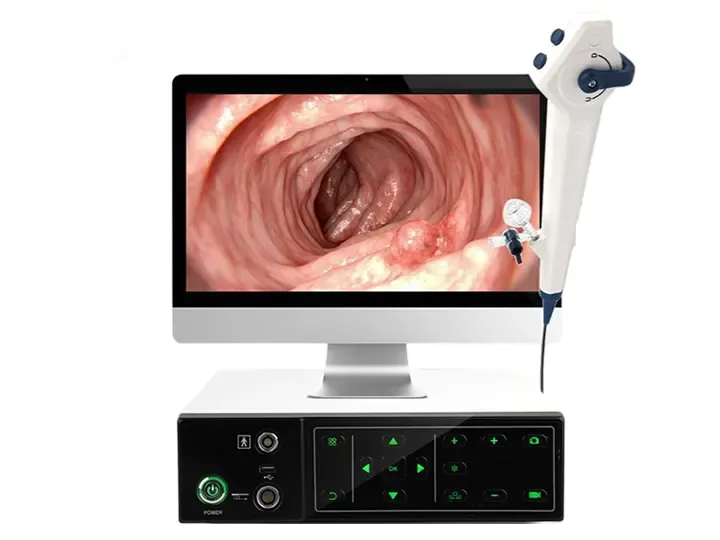Reusable bronchoscope is an endoscope that can be reused after multiple disinfection and sterilization, mainly used for the diagnosis and treatment of respiratory diseases. Compared with traditional disposable bronchoscopes, it has advantages in cost-effectiveness and environmental protection, but requires strict cleaning and disinfection processes to ensure safety.
1. Main structure and function
Insertion part: a slender flexible tube (usually 2.8-6.0mm in outer diameter), which can enter the trachea and bronchi through the mouth/nose.
Optical system:
Fiber bronchoscope: uses optical fiber bundle to guide the image (suitable for basic examination).
Electronic bronchoscope: equipped with a high-definition CMOS sensor at the front end, the image is clearer (mainstream trend).
Working channel: tools such as biopsy forceps, cell brushes, laser optical fibers, etc. can be inserted for sampling or treatment.
Control part: adjust the lens angle (bend up and down, left and right) to facilitate observation of different bronchial branches.
2. Core application scenarios
Diagnosis:
Lung cancer screening (biopsy, brushing)
Sampling of pathogens for lung infection
Exploration of airway stenosis or foreign bodies
Treatment:
Removal of airway foreign bodies
Stenosis dilation or stent placement
Local drug infusion (such as tuberculosis treatment)
3. Key processes for reuse
To ensure safety, disinfection and sterilization specifications (such as ISO 15883, WS/T 367) must be strictly followed:
Bedside pretreatment: Immediately flush the pipe with enzyme wash solution after use to prevent secretions from drying up.
Manual cleaning: Disassemble parts and brush pipes and surfaces.
High-level disinfection/sterilization:
Chemical immersion (such as o-phthalaldehyde, peracetic acid).
Low-temperature plasma sterilization (applicable to electronic mirrors that are not resistant to high temperatures).
Drying and storage: Store in a dedicated clean cabinet to avoid secondary contamination.
4. Advantages and limitations
Advantages
Low cost: The long-term use cost is significantly lower than that of disposable bronchoscopes.
Environmental protection: Reduce medical waste (plastic pollution of disposable scopes).
Comprehensive functions: Larger working channels support complex operations (such as frozen biopsy).
Limitations
Risk of infection: If cleaning is not thorough, it may cause cross infection (such as Pseudomonas aeruginosa).
Complex maintenance: Leakage and optical performance need to be checked regularly, and the maintenance cost is high.
5. Development trend
Material upgrade: Antibacterial coating (such as silver ions) reduces the risk of infection.
Intelligent cleaning: Fully automatic cleaning and disinfection machines improve efficiency.
Hybrid mode: Some hospitals use a combination of "repetitive + disposable" to balance safety and cost.
Summary
Repetitive bronchoscopes are important tools for respiratory diagnosis and treatment. They are economical and functional, but rely on strict disinfection management. In the future, with the advancement of materials and sterilization technology, their safety will be further improved.



